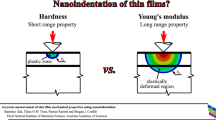Abstract
A new treatment of the effect of the work of compression upon thermal conductivity measurements by the transient hot-wire technique is presented. The new analysis improves upon those given earlier and leads to quite a different result. The result makes it clear that the dilute gaseous state need not be excluded from the range of thermodynamic states in which accurate measurements are made owing to this effect, in contrast to the conclusions of earlier work.
Similar content being viewed by others
References
W. A. Wakeham, A. Nagashima, and J. V. Sengers, Experimental Thermodynamics, Vol, III: Measurement of the Transport Properties of Fluids (Blackwells Scientific, Oxford, 1991), Chap. 7.
J. M. N. A. Fareleira and C. A. Nieto de Castro, High Temp.-High Press. 21:363 (1989).
J. Healy, J. J. De Groot, and J. Kestin, Physica 82C:392 (1976).
J. J. De Groot, J. Kestin, and H. Sookiazian, Physica 75:454 (1974).
J. W. Haarman, Ph.D. thesis (Technische Hogeschool, Delft, 1969).
J. Kestin, R. Paul, A. A. Clifford, and W. A. Wakeham, Physica 100A:349 (1980).
F. G. Leppington, Private communication (1991).
C. F. Gerald and P. O. Wheatley, Applied Numerical Analysis, 4th ed. (Addison-Wesley, New York, 1989).
Author information
Authors and Affiliations
Rights and permissions
About this article
Cite this article
Assael, M.J., Karagiannidis, L., Richardson, S.M. et al. Compression work using the transient hot-wire method. Int J Thermophys 13, 223–235 (1992). https://doi.org/10.1007/BF00504433
Received:
Issue Date:
DOI: https://doi.org/10.1007/BF00504433




